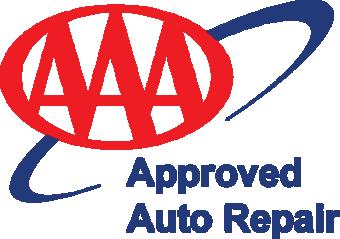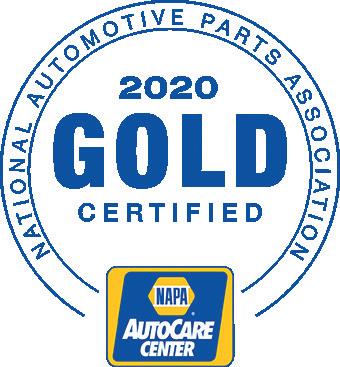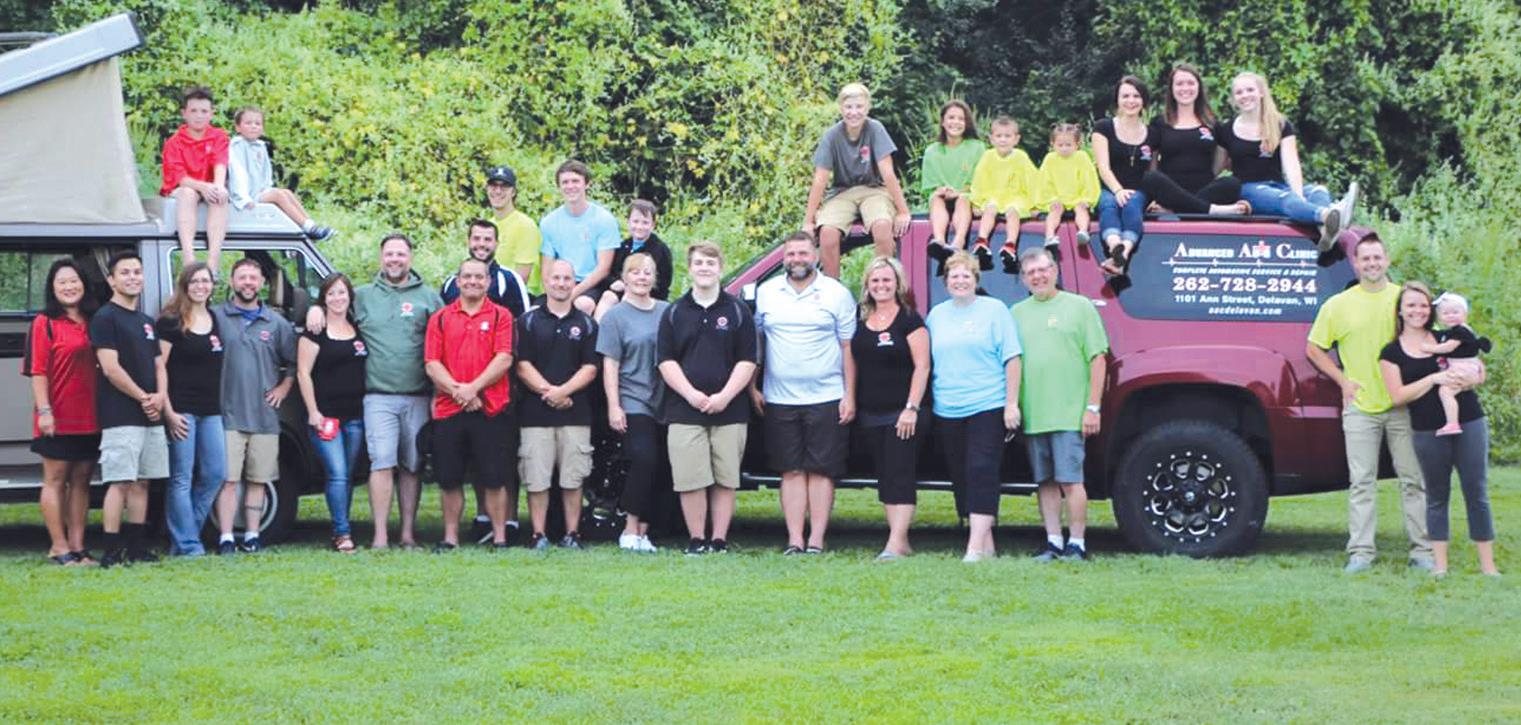On the ROAD













From younger drivers blasting music, to older drivers with their hands on “ten” and “two,” it’s no secret that with each new generation comes a shift in values, beliefs and opinions. Those generational differences shape everything from travel plans to spending habits.
With Gen Z being the latest generation to be of driving age, recent data from Hankook Tire reveals how different generations of drivers simply do things differently. Here is a look at four differences between younger drivers and those who have some miles behind them.

Younger generations steer toward saving a dollar or two.
High prices have younger drivers seeking opportunities to lower car care costs, even if that means doing some of the work themselves. Nearly half of Millennials and Gen Z said they would conduct vehicle maintenance themselves (48%) or switch service locations (45%) in order to save money.
In fact, Hankook found that Millennials are most likely to perform their own car maintenance to save money, whereas Boomers are least likely to do so. Older generations would rather take their cars into repair shops, regardless of cost.
Almost everyone will go the distance to save money on gas.
With the high cost of gas, 86% of people in the survey said they would be willing to drive up to 20 minutes to save at the pump. And though many surveys show that overall, younger generations drive less than older generations, they will drive further to save the extra buck. According to Hankook, about 1 in 5 Gen Z drivers (21%) and Millennial drivers (19%) are willing to drive more than 20 minutes to save on gas.

In addition to going the extra mile for gas, 11% of Gen Z responders and 18% of Millennials will turn to public transportation, walking, biking or ride share apps to save on driving costs.
EVs are the way of the future. With gas prices top of mind, another difference between generations is how they feel about EVs and how likely they are to purchase one.
While nearly half (46%) of Americans expect to purchase or lease an EV within the next five years, intent is even higher among Millennials (60%) and Gen X (44%) drivers. Only 30% of Boomers noted the same.
Younger generations are most likely to road trip. While post-pandemic travel intent continues to trend upwards overall, there are still some generational differences in who is packing their bags –especially around the holidays.
Hankook’s latest survey found 44% of Millennials plan to travel by car before the end of the year, compared to 29% of Boomers.
Part of the reason for less holiday travel could also be financially motivated – Deloitte’s research reveals older generations are shying away from travel in order to save money. In fact, 37% of those surveyed by Deloitte cited financial concerns as their top reason for not traveling this year.
(BPT)
Each generation packs different expectations when they get behind the wheel. Regardless of what those may be, it is clear that generational behaviors are going to have an outstanding impact on the road ahead.
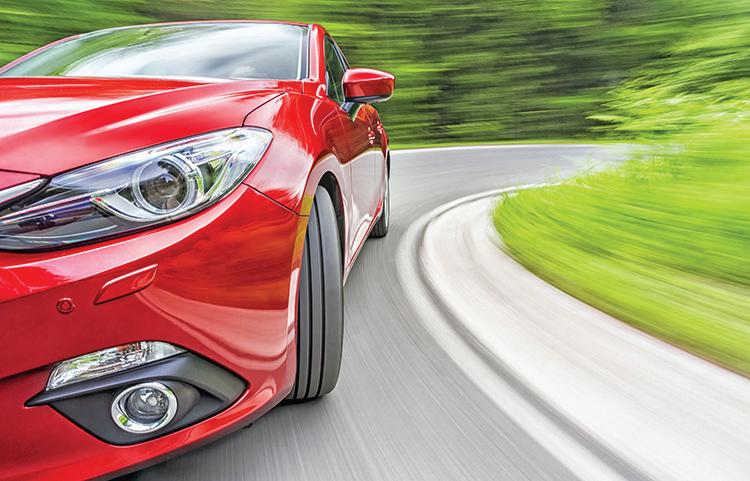






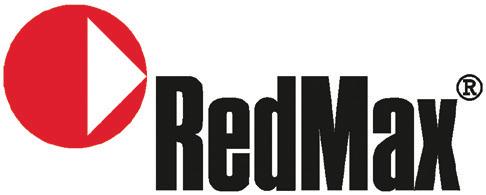







B Towne Auto Service, formerly known as Mike’s Quality Service, places an emphasis on honest and affordable auto repairs for customers looking to keep their vehicles running.
By Jason Arndt STAFF WRITERThe multi-faceted auto repair shop at 457 Falcon Ridge Drive in Burlington offers general maintenance services, electronic services, heating and cooling services, engine and transmission services, brakes, tires, basic inspections and emissions testing, among many others.
“Our team is equipped with the latest diagnostic tools and technology to ensure that any issues with your vehicles are accurately identified and effectively resolved,” B Towne wrote on its website. “We use only the highest quality replacement parts, fluids and filters to ensure that your vehicle is returned to you in top working condition.”
From routine preventative maintenance to more extensive repairs, B Towne touts knowledge and expertise, courtesy of a strong team dedicated to helping customers.
Owner Mark Pickford, who bought the business from Mike Barajas, decided to keep Barajas’ team to ensure continuity of care for customers seeking auto repair services.
The team consists of seven employees, including one apprentice, ranging in experience from 12 months to more than a decade.
“Anybody can buys tools, or lifts, or a building, but it is the employees in that building who keep business going,” Pickford said. “My goal was to have the same team, same mechanics, and service people know us for.”
Since he took over earlier this year, Pickford has made a concerted effort to learn more about repeat and new customers, alike.
“I have taken my time to meet every customer who comes through the door,” said Pickford, who noted some customers had initial apprehension because of the ownership change.
However, B Towne Auto Service has experienced a seamless transition, with customers experiencing the same quality of service that Pickford’s predecessor provided.
“We are still charging the same hourly (labor) rate this year that Mike was charging in 2022,” he said. “I didn’t feel the need to change anything.”
Meanwhile, as B Towne had a seamless transition, Pickford said he places an emphasis on honesty, including a sincere appraisal of auto repair needs.
“We want to give a genuine appraisal of what a car needs,” he said.
“It is about taking care of the customer and their vehicle.”
While the area experiences a transition of its own, moving from winter to spring, Pickford said he has seen many customers come in seeking continued preventive maintenance such as routine oil changes, tire rotations, brake checks, among others.
But unlike winter, when people spent most of their time indoors, customers are preparing for the spring and summer seasons consisting of long-distance road trips.
Most recently, Pickford said two customers came in stating they planned on taking road trips to Tennessee and Texas, respectively.
The customers, Pickford said, simply sought an assessment to ensure their vehicles were ready to absorb hundreds of miles on the road.
“They wanted a full check up – brakes, belts, oil changes, tires – so they can prepare for travel,” he said.
Additionally, other customers have decided to bring their classic cars out of storage, according to Pickford.
“They are preparing to take their vehicles out to area car shows,” he said.
For other customers, he simply recommends people continue with preventative maintenance, primarily for safety. Pickford said his team members work closely with customers to determine actual auto repair needs.
During routine inspections, his team helps customers prioritize auto repair needs, with safety as the top priority.
Also, B Towne Auto does not incentivize its workers to perform repairs beyond actual vehicles, Pickford said
“We don’t incentivize selling customers parts they don’t need,” he explained.
B Towne Auto Service is also a certified State of Wisconsin emissions testing center, with the repair shop seeing customers on a first-come, first-served basis, for the mandated testing.
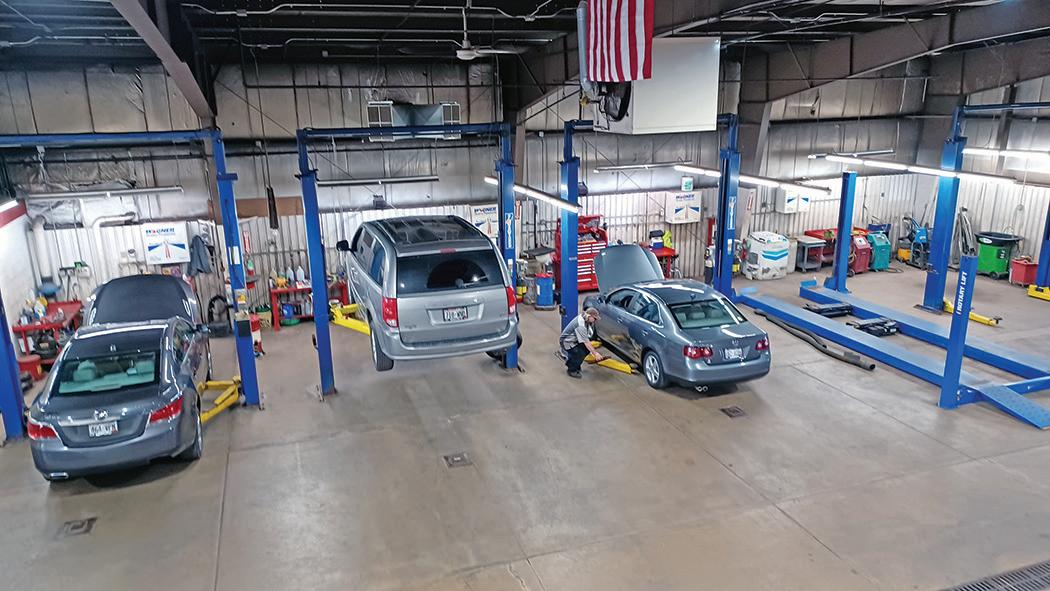
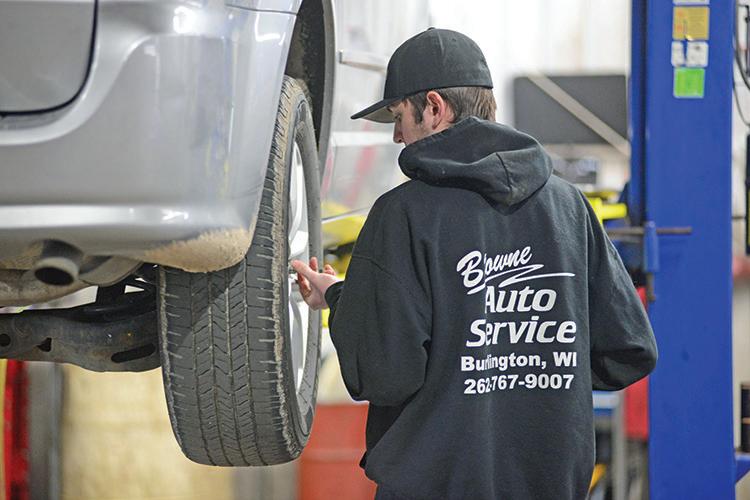

Pickford said B Towne Auto typically sees between 80 to 100 vehicles for emissions testing, which is free of charge.
B Towne Auto Services, open Monday through Friday from 8 a.m. until 5 p.m., is accessible online at btowneauto.com.
Electric cars remain a novelty for millions of people who haven’t yet imagined the day when they’ll cut ties with combustion engines. That day might be coming sooner rather than later, and if it does it will mark the culmination of a history that’s longer than even some ardent auto enthusiasts may realize.
According to the U.S. Department of Energy, innovators in Hungary, the Netherlands and the United States considered battery-powered vehicles as far back as the early 1800s.
Electric vehicles, or EVs, have gone through some considerable ups and downs since those early days, but reached a significant turning point in 2000, when the Japanese automaker Toyota released the Prius worldwide. The Prius was the first mass-produced hybrid electric vehicle and it paved the way for many of the modern EVs on the road today.
Despite the release of the Prius more than two decades ago, motorists may still have many questions about EVs. Perhaps the most common question about EVs concerns their batteries.
Individuals may be hesitant to purchase their own EV out of a fear that the battery will not last as long as the standard combustion engine in more traditional, gas-powered vehicles. But the automotive
experts at CarFax note that all EV batteries sold in the United States come with warranties that last for no less than eight years or up to 100,000 miles.
The automotive resource Car and Driver urges drivers considering EVs to read the manufacturer’s battery warranty thoroughly before purchasing an electric car or truck. That’s because some warranties only cover the battery if it completely dies, which is a relatively rare occurrence.
However, Car and Driver notes that certain manufacturers, including BMW, Tesla and Nissan, among others, will cover a battery if its capacity drops to 60% to 70%. Drivers should still read these manufacturers’ warranties carefully to confirm just what is and isn’t covered regarding their EV batteries.
The online EV resource EVBox notes that charging a battery will affect its lifespan. That might scare some prospective EV buyers off, as various sources indicate the average cost of a new EV battery is around $5,500, though some can cost as much as $15,000.
But the loss of charging capacity is
There’s still much for drivers to learn about EVs. Understanding how EV batteries work and how long they should continue to do so may calm some of the more common concerns consumers have about plug-in vehicles.
perhaps not as big a concern as drivers might think. Plug In America, a nonprofit educational organization that advocates the use of plug-in vehicles, reports that a Tesla Model S loses only around 5 percent of its original capacity over the first 50,000 miles, and the depletion rate slows down
after that.
Since many individuals prefer to replace their vehicles long before they reach the 100,000 mile marker, it’s reasonable to expect EV buyers will never have to replace the batteries on their plug-in cars or trucks.
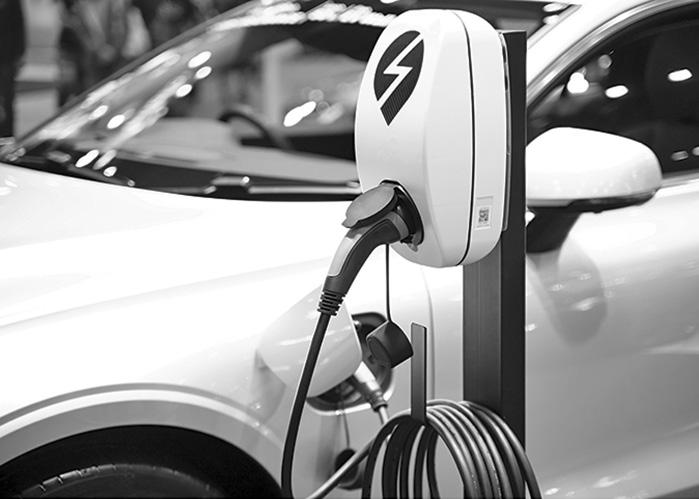
With gas prices surging and national efforts being made to reduce carbon emissions, you may be eyeing car models that promise to reduce or even eliminate your reliance on gas.
However, depending on your lifestyle, location, finances, driving habits and other factors, you may not be ready to go fully electric just yet. The good news? A hybrid is a great transitional vehicle to put you on the path to more sustainable driving now. Here’s why:
Hybrid vehicles, which combine smaller gas engines with battery-powered electric motors, make it possible for anyone to contribute to the fight against carbon emissions and reduce their gas expenses.
In fact, today’s hybrids achieve 20% to 35% better fuel economy than conventional internal combustion engines, according to Green America. In the short term, hybrids are a cost-effective option compared with most all-electric vehicles currently on the market. While a battery electric vehicle will save you even further on fuel costs down the line, the average transaction price for one of these rides is still well above $60,000.
A hybrid is also a key alternative to electric vehicles for those who live in locations where the current electric vehicle infrastructure doesn’t yet support everyday transport, or for those who don’t own a home
where they can charge a vehicle at night.
With greater fuel economy than a traditional internal combustion engine, and requiring no lifestyle overhaul to operate, hybrids are one way to reduce carbon emissions today.
Given these varied benefits, and the rising number of available vehicles with a hybrid powertrain, it’s no surprise that annual hybrid sales in the United States have more than doubled since 2019.
As you shop around, be sure to look for manufacturers with hybrids available across their entire lineup, from pickups and SUVs to sedans. This will help you find a model that matches your needs.
Sporting blue badges, it’s easy to spot Toyota’s hybrid options on the lot. While hybrid technology has historically cost more, prices are leveling, and budgetconscious buyers will find options under $30k, including the Corolla Hybrid and the all-new Prius.
Boasting all the latest safety and multimedia features, along with sleek exterior design, you won’t have to compromise on style or performance in the quest for efficiency.
To learn more about electrified vehicles, including hybrids, plug-in hybrids, fuel cell electric and battery electric cars, visit toyota.com/electrified. (STATEPOINT)

The last few years have not proven the most advantageous times for new car buyers. According to the Consumer Price Index Summary from the United States Bureau of Labor Statistics, buyers paid 12.2% more for new vehicles in January 2022 than they had in January 2021. Faced with such a significant increase in price, many drivers understandably want to keep their current cars longer than they might have initially planned.
Data released by S&P Global Mobility in early 2022 indicated that the average vehicle on the road is 12 years and two months old, which marked the highest number in the 20-plus years such information was tracked. A host of variables affect how long drivers keep their cars, but the rising cost of new vehicles has undoubtedly compelled many drivers to aspire to keep their cars for longer periods of time.
Aging cars may require a little more TLC than vehicles that are right off the dealership lot. But the following are three simple tips that can help drivers keep their cars running longer.
Know when and how to fill up. Every driver has likely visited a filling station when an oil tanker is busily filling the tanks. That’s traditionally been considered a less than ideal time to fill up, as the theory is that filling the tanks stirs up sediment that

could then find its way into consumers’ gas tanks, adversely affecting their vehicles. However, that’s often dependent on the station itself and how much its owners prioritize maintenance of the tank and filtration systems. Drivers who trust their
local station owners can likely fill up when the tankers are present without worry. In addition, avoid topping off once the nozzle clicks when filling up. The U.S. Environmental Protection Agency notes that topping off is harmful
to the planet and the vehicle, as gasoline needs room to expand. When you top off, the extra gas may damage the vapor collection system and cause the vehicle to run less efficiently.
Become a more careful driver. A careful approach when behind the wheel is safer than aggressive driving and beneficial for your vehicle. When starting, avoid revving the engine, which needlessly wears it down. When out on the road, avoid rapid accelerations, which also contributes to needless wear and tear. Even excessive idling can adversely affect the engine, so keep winter warm-ups to around 30 seconds to prevent damage to engine components.
Change oil more frequently as the vehicle ages. It’s true that modern vehicles no longer require oil changes for every 3,000 miles driven. However, as vehicles age, drivers and their vehicles’ engines may benefit from more frequent oil changes than the owner’s manual necessarily recommends. Oil changes remove dirt and metal particles from the engine, potentially contributing to a longer life expectancy. More frequent changes can be especially beneficial for vehicles that are routinely driven in stop-and-go traffic.
(METRO CREATIVE)
Vehicles are among the most costly expenses individuals have. According to data from Kelley Blue Book, the average price paid for a new vehicle in the United States in September 2022 was $48,094.
Since vehicles are such sizable investments, it behooves motorists to do as much as they can to keep their cars and trucks running smoothly. Vehicle owner’s manuals typically recommend maintenance intervals and should be drivers’ first resource for information regarding how to take care of their cars and trucks. But the following are some standard maintenance intervals drivers can keep in mind.
The 3,000-mile marker used to be the benchmark for changing oil, but modern vehicles can now go longer between oil changes. However, it’s still a good idea to check other fluid levels every 3,000 miles. Windshield washer fluid, coolant, brake fluid, transmission fluid, and power steering fluid should all be checked every 3,000 miles and topped off if levels are low.
It’s wise for drivers to perform some additional maintenance checkups every 3,000 miles. Check tire pressure, inspect hoses (which should not be leaking or bulging) and clean the interior of the vehicle every 3,000 miles.

Maintenance intervals are created to serve as a guideline for drivers. Any issues that arise should still be brought to the attention of a mechanic regardless of how many miles have been added to the odometer since the most recent trip to the garage.
Many vehicle manufacturers now recommend oil changes every 5,000 miles. Tire rotations also can be part of service visits at this interval, and drivers can ask their mechanic to check their fuel filters and batteries every 5,000 miles as well.
Many may already do this as part of their comprehensive maintenance packages, but it’s still good to confirm if they do and request they do so if it’s not part of the plan.
Drivers also can request that cabin air filters are inspected at this point, though they can generally last a year before they
Around the 5,000-mile mark, wiper blades also may begin to show signs of wear and tear, including streaking on the windshield or scratching noises when in use.
Each of those signs indicates the wipers need to be replaced. However, drivers should take note of these signs regardless of when they appear. Some may not make it 5,000 miles before they begin to wear down. In such instances, they should be replaced immediately regardless of how many miles it’s been since they were installed.
Some vehicles may only require oil changes every 10,000 miles. That’s not uncommon in vehicles that use synthetic oil, though drivers are urged to consult their owner’s manuals.
Brake pads also may need to be replaced around this time, and one telltale sign of that is a squeaking noise whenever the brakes are applied.
Drivers can ask their mechanics to check the alignment of their vehicles around this interval as well. Though many vehicles won’t develop alignment issues, it’s best to check for such issues every 10,000 miles or whenever a vehicle feels as though it’s pulling in one specific direction.
(METRO CREATIVE)



